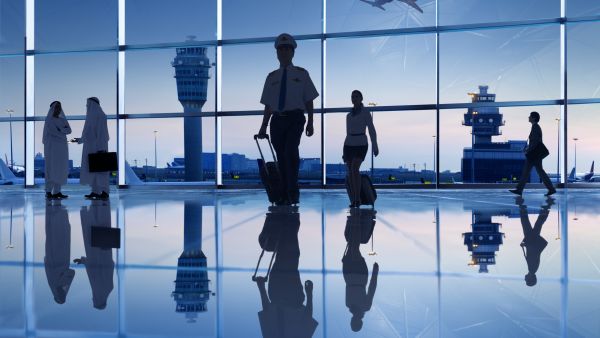More than any other economic sector, the aviation industry has received one of the hardest blows since the novel coronavirus broke out about a year ago. But as the world braces for an approaching "return to normal," we try to examine how the latest developments including the beginning of vaccination programs are reflecting on the recovery process.
Saudi Arabia and the #MiddleEast would feel the #economic impact of #COVID19 on the aviation sector for many years to come.Number of passengers flying on regional #Airlines in October was down 86.7 percent,Global traffic was down 70.6 percent compared with October 2019.#COVID19 pic.twitter.com/6mHl7ieBxz
— Clara Singleton (@ClaraSingleto13) December 9, 2020
Pressured by full closures and flight bans that started last Spring, airlines all over the world have experienced devastating financial damage, one they will not be able to fully recover from any time soon.
Additionally, regional travel across MENA seemed to plummet sharply as millions of expats and immigrants decided to skip their annual visits to their home countries, either forced by full lockdowns and travel halts, or by fear of getting infected during their travels.
Besides the financial challenges and job instability felt by millions of people across the globe, decisions to cancel travel plans remained quite strong, even after airports were carefully open during the summer.
Moreover, the extra safety measures and new procedures required for travelers after the pandemic have influenced decisions taken by travelers who might have considered short tours and leisure trips, deepening the travesty lived by airlines.
#coronavirus pandemic weighs on passenger traffic of Middle East airlines – @IATA https://t.co/tkCZakYmwe pic.twitter.com/zHoitGcqwN
— Arab News (@arabnews) June 6, 2020
In our region, airlines have reported enormous losses by billions of dollars, ones that have urged them to consider letting go of thousands of workers in the industry, to save their businesses.
Last April, the International Air Transport Association (IATA) called on governments in the Middle East and North Africa to support their airlines before it's too late, suggesting that the regional industry could lose $24 billion of passenger revenue compared to 2019. At the time, Saudi and Emirati carriers were bracing for a combined $11 Billion revenue plunge, according to Aviation Business Middle East.
Despite a slight improvement in numbers of travelers last October, particularly as GCC countries are reporting successful control over infection cases, regional airlines saw a near 87% slash year-on-year compared to 2019, compared to September's 89% demand drop.
However, recent spikes in Europe and North America are sending warning signs of a worsening airline crisis in the region, especially as expats who were expected to visit their home countries for the holiday season are watching their countries enter new lockdowns and impose movement restrictions.







